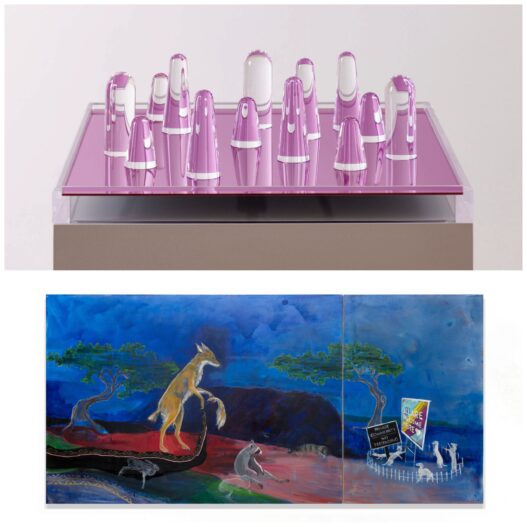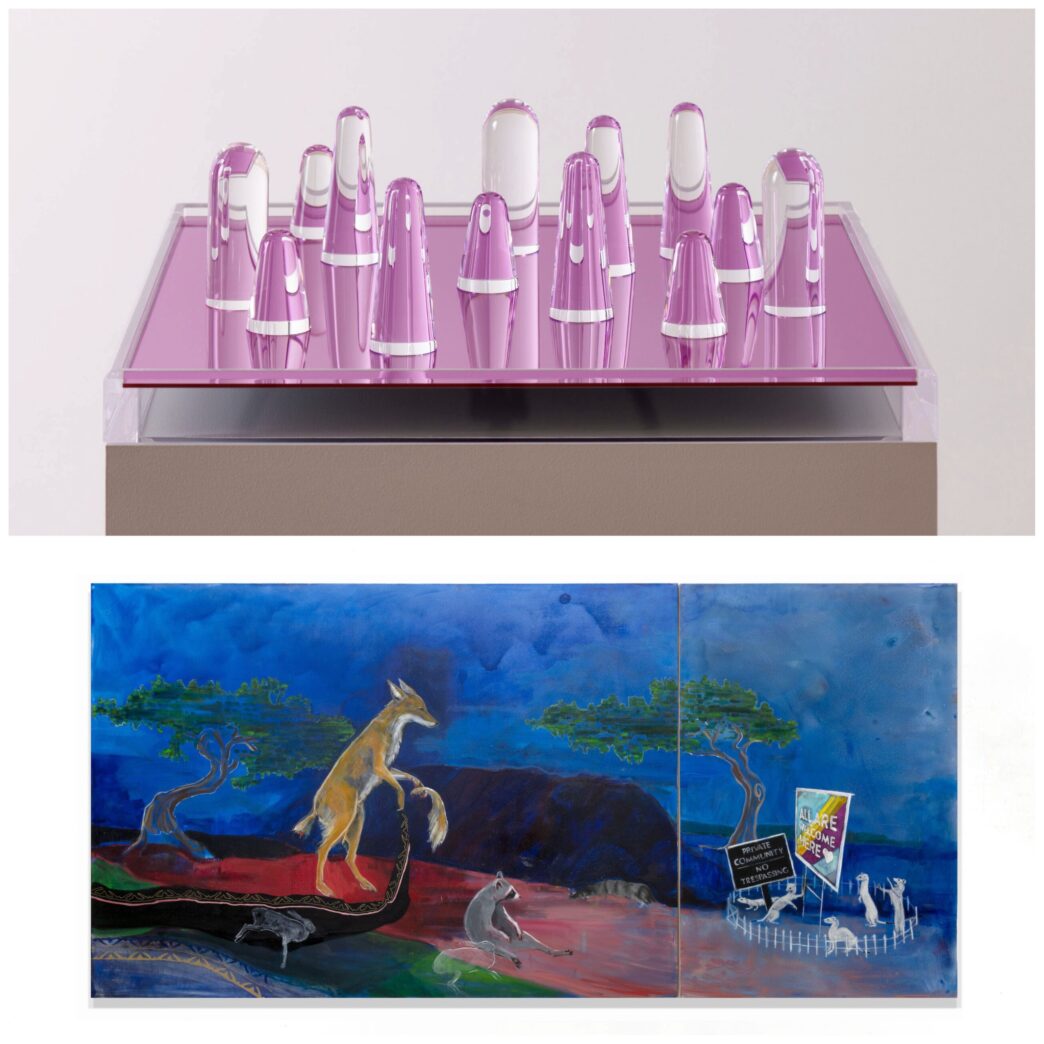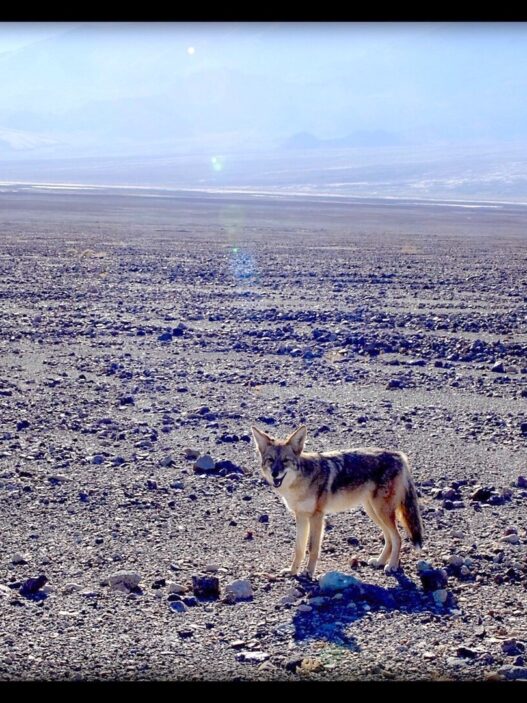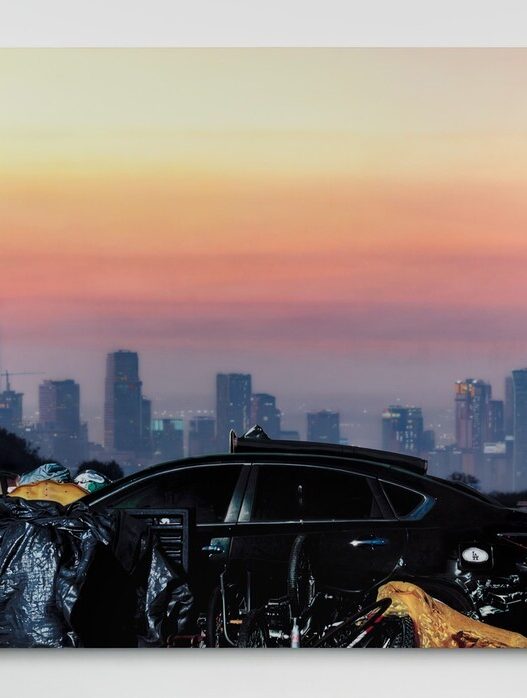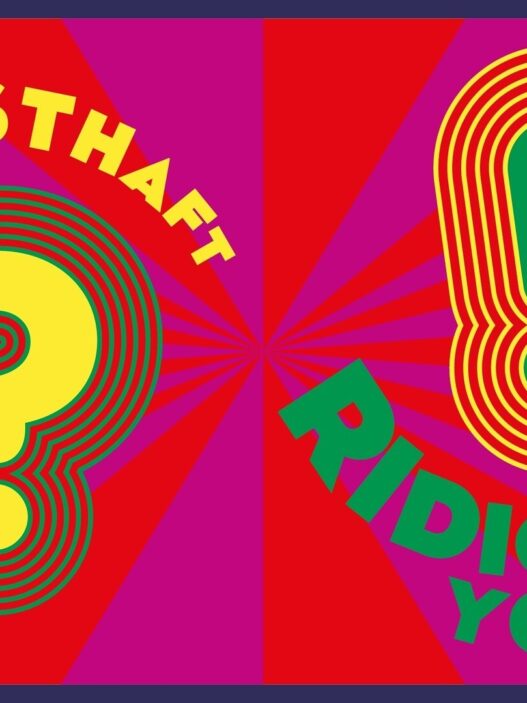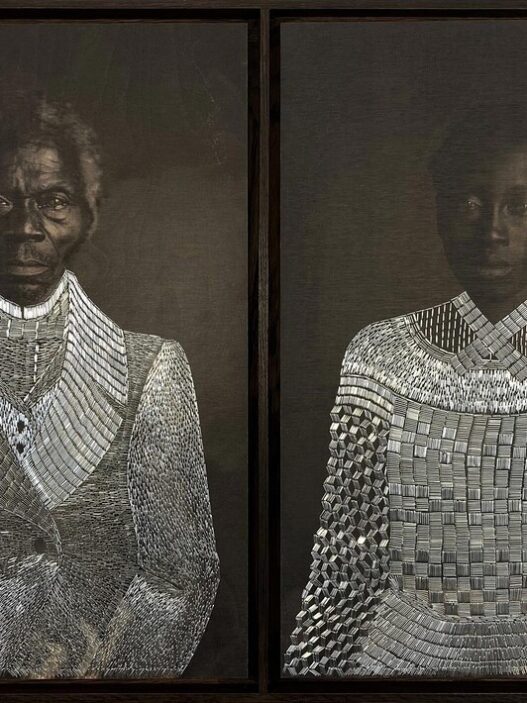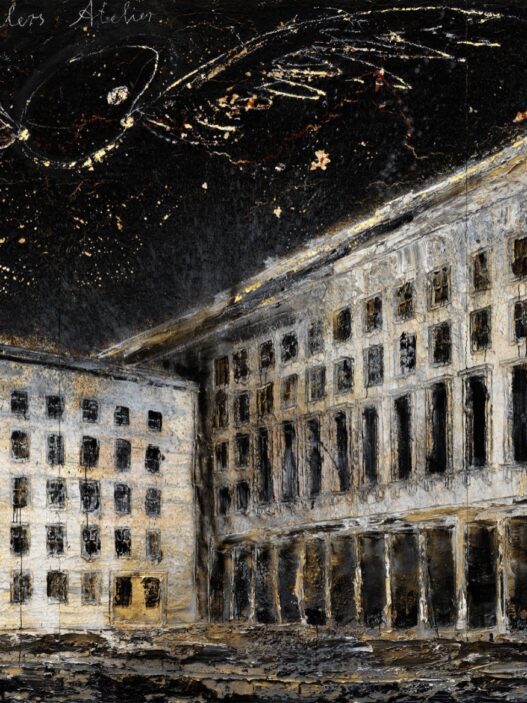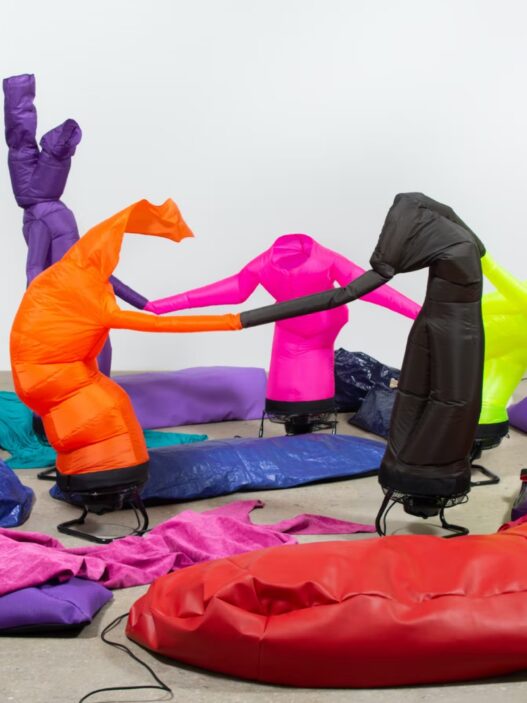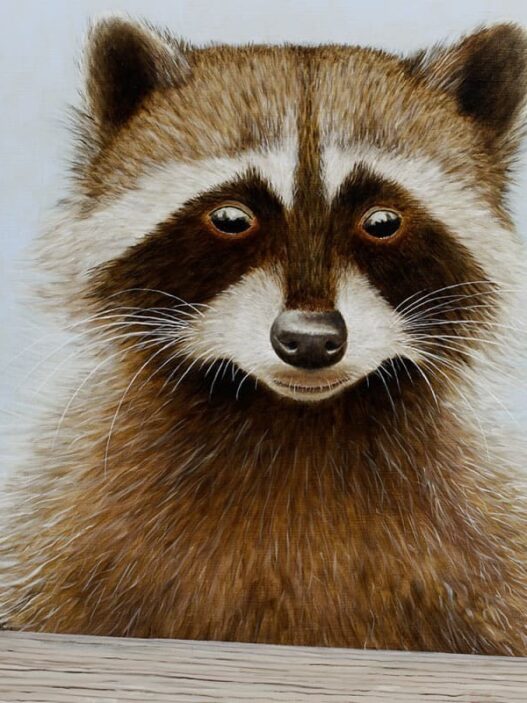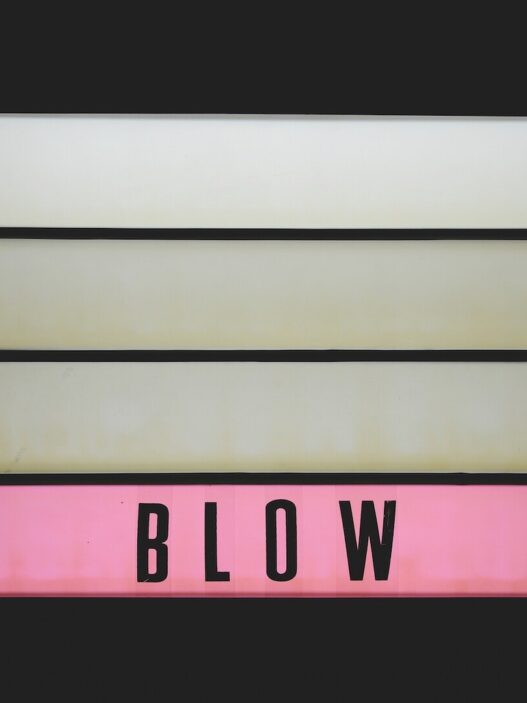Judy Chicago: “Making Advances”
“Judy Chicago: Making Advances,” a solo show by Jessica Silverman, will be on display from November 10 to January 7, 2023. It will include a number of brand-new minimalist sculptures as well as old drawings that explore color as a tool for transformation and perceptual awareness. In the 1960s, Chicago started experimenting with color using a condensed formal vocabulary of geometric forms. She did this by recasting minimalism’s problems as perceptual issues of selfhood and feminism subjectivity, which continue to influence her practice today.
The five new sculptures in the Moving Parts (1967/2022) series, which are formed of clear acrylic forms on variously colored mirrors in gold, blush, magenta, purple, and teal, serve as the exhibition’s focal point. Each of the five sculptures is made up of 13 movable acrylic pieces that, with their cylindric shapes and rounded tips, catch and refract dazzling color. The polymorphic, erotically evocative pieces seem to extend in many directions when placed against a mirrored base. They resemble the radiating petal arrangements in the artist’s Though the Flower (1974) imagery because they give the impression of overlapping planes and sharply edged color.
In a piece named 3.5.5 Acrylic Shapes from 1967, Chicago conceptualized and produced this artwork on a colorless mirror. The freedom of its movable components calls into question the strict, authoritarian standards of much minimalist art and proposes relational interactions. Even though they weren’t around in 1967, colored mirrors have significantly increased the meaning of the piece. Moving Parts extends Chicago’s feminist gesture by seamlessly fusing surface, form, and color; rather than being imposed upon a surface, color is interwoven into the perceptual experience.
On the walls are ombre drawings that explore the geometry of female flesh and date from the 1960s and 1970s. Rectangular fans melt stiff structure into soft sensations by dispersing color gradients from a central slit onto a horizontal landscape. The energy of a female orgasm propels circular vortices, often known as “whirling donuts,” which spin color around a center core. Chicago, whose early years were spent in the blushing light of Los Angeles and who has long resided under the prismatic skies of the New Mexico desert, places a great deal of importance on the ability of color to convey emotional states. This ability is also closely related to her female-centric imagery.
Judy Chicago (b. 1939, Chicago) has worked for six decades pioneering Feminist art and art education. She has work in the collections of the British Museum and Tate, London; The Met; Brooklyn Museum; Moderna Museet; National Gallery, Washington D.C.; LACMA, CA; MOCA Los Angeles; Hammer Museum, Los Angeles; Getty Trust and Getty Research Institute, Los Angeles; SFMOMA; Art Institute of Chicago, and over 25 university art museums. She has enjoyed recent museum surveys at The De Young Museum, San Francisco; the National Museum of Women in the Arts, Washington, D.C.; and ICA Miami. Chicago’s work has been exhibited in a broad range of major thematic group shows such as “Pacific Standard Time: Made in LA” at the Hammer Museum, Los Angeles; “Ends of the Earth” at Haus der Kunst, Berlin; “Pretty Raw: After and Around Helen Frankenthaler” at the Rose Art Museum; Waltham, MA and “The World Goes Pop” at Tate Modern, London. In 2023, Chicago will have her first New York museum retrospective. Chicago lives and works in Belen, NM and is represented by Jessica Silverman, San Francisco and Jeffrey Deitch.
Julie Buffalohead: “Noble Coyotes”
“Noble Coyotes,” a solo show by Julie Buffalohead, will be on view from November 10 to January 7, 2023. This will be the artist’s debut exhibition with the gallery and in San Francisco. In the exhibition, which examines memory, childhood, and mothering, there are nine ink drawings on handmade watercolor paper and seven oil paintings on canvas. A coyote, a rabbit, and a muskrat, among other animals, act out Buffalohead’s visual storylines with metaphor and humor. These animals are given agency and personhood.
All Are Welcome (2022), the largest piece in the collection, features a seemingly joyous mix of whimsy and tension. A bunch of ermine holding banners reading “Private community, no trespassing” and “All are welcome here” are enclosed inside a little picket fence. A racoon and a few spirit-rabbits are perplexed as to the significance of the fox’s sacrifice to the ermine as he approaches and cuts off his own tail as an offering. The project, which was developed in the wake of Minneapolis murder of George Floyd, explores ideas of inclusivity through a reimagining of regionally typical yard signs.
In two of the paintings in the show, the sharp and indescribable humor of the artist questions stereotypes of Nativeness. In The Noble Savage (2022), an imagined image of the classic noble savage is depicted in outline against a pink background painted in expressive strokes. A group of otters approach the figure and offer him or her items like snakes and bead chains. The trickster coyote in a red dress and high heels is standing across from him. The coyote, with its arms crossed, casts doubt on the proceedings by raising issues of representation and notions of Native mysticism.
In contrast, Antihero (2022) has a coyote riding a toy rocking horse while sporting a hilarious arrow through the head prop hat. When the horse turns around, arrows splinter beneath it, and a coyote blatantly gives a headdress to an unusual collection of animals from North America.
Painterly figures suspended in jewel-toned compositions that imply a type of intimacy where there is no hierarchy between background and foreground demonstrate the artist’s mastery of color and space. In Isle of Dogs (2022), a mother in her eighties is sleeping on her side next to a group of dozing dogs in a large area of teal brushwork. The woman’s hair is brushed by a muskrat, which appears as a hero in Ojibwe tales for gathering earth to create the universe. This act of mothering the mother takes kinship into account within the framework of a creation story.
In Buffalohead’s pen and ink wash drawings, ideas of nostalgia and childhood are combined with elements of contemporary culture. A coyote and a badger sit in a cardboard Amazon delivery box in Monopoly (2022), where an otter analyzes the traditional board game while making an allusion to an other form of monopoly.
All of the works feature funny and amusing settings that explore the concepts of duality and contradiction using animals as both representations of humans and sources of wisdom for humans. “I’m always waiting for animals to talk again,” adds Buffalohead.
Julie Buffalohead (b. 1972, Minneapolis, MN) received her BFA from the Minneapolis College of Art and Design in 1995 and her MFA from Cornell University in 2001. She is the recipient of numerous awards and fellowships including the Pollock-Krasner Foundation Grant, Lillian Orlowsky and William Freed Grant, Guggenheim Fellowship, Joan Mitchell Foundation Painters and Sculptors Grant, and the McKnight Foundation Fellowship for Visual Arts. She has had solo exhibitions at the Minneapolis Institute of Arts; Denver Art Museum; Highpoint Center for Printmaking, Minneapolis; the Museum of Contemporary Native Arts, Santa Fe, NM; and the Smithsonian National Museum of the American Indian, Washington, D.C. Her work is in the collections of the Minneapolis Institute of Arts; Walker Art Center, MN; Denver Art Museum; Davis Museum, Wellesley, MA; Field Museum, Chicago; Nelson-Atkins Museum of Art, Kansas City, MO; Eiteljorg Museum, Indianapolis, IN; Detroit Institute of Arts, MI; Weatherspoon Art Museum, University of North Carolina, Greensboro; Weisman Art Museum, University of Minnesota, Minneapolis; Yale University Art Gallery, New Haven, CT; among others. Buffalohead is a member of the Ponca Tribe of Oklahoma. She lives and works in St. Paul, MN.









